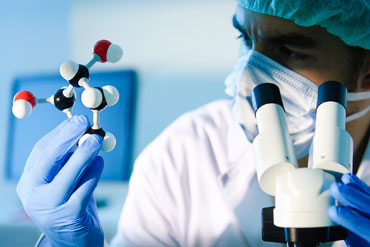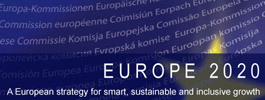Prof. Philippe Hartemann, Chair of the Scientific Committee on Emerging or Newly Identified Health Risks

In April 2013, new members of the Scientific Committee on Emerging or Newly Identified Health Risks (SCENIHR) were nominated for the 2013-2016 term in Luxembourg.
The Committee members were selected by the European Commission as independent experts based on their outstanding scientific expertise via a public call for expression of interest. They have also to guarantee the absence of a conflict of interest which is an excluding criterion. Besides the written declaration of any conflict of interest presented at the time of their appointment, members and external experts working for SCENIHR have to provide written annual declarations confirming this and declare orally during each session, and for each examined issue, any possible conflict of interest. Their declarations are assessed by the Secretariat, the Chair and other members in order to exclude any conflict of interest with the items on the agenda. CVs and declarations are publicly available on the Scientific Committees website.
Due to the complexity of the requested opinions, an ad hoc working group is organized for each topic, recruiting some members of the committee and some external experts selected on the basis of their excellence, such as internationally recognized expertise and peer reviewed publications linked to the subject, and their independence.
The mandate of SCENIHR is to give advice to the European Commission on Emerging risks, Newly Identified Risks, broad, complex or multidisciplinary issues requiring comprehensive assessment and issues not covered by other bodies. This includes for example, Nanotechnologies, Electro Magnetic Fields, Medical Devices, Anti-Microbial Resistance, Tissue Engineering, Synthetic Biology, Blood Products, Interaction of risk factors, Synergic effects and many more. Thus, many opinions require the participation of members from other committees and/or other assessment bodies.
There are currently seven opinions in the pipeline, one preliminary opinion under public consultation: the safety of PIP Silicone Breast Implants (2013 update) and one which will be published soon: the safety, health and environmental effects and role in antimicrobial resistance of nanosilver. The work has just started for Synthetic Biology, while six opinions are at the final stage and will be approved for public consultation in the next few months. Five of them are dealing with Medical Devices DEHP, Bisphenol A, Nanomaterials, Dental Amalgam and alternative dental restoration materials and Metal on metal joint replacements with a focus on hip implants. The other opinion is related to the health effects of Electro Magnetic Fields (2013 update).
One of the main challenges is to respond to requests from Commission Departments in a short time frame for such complex issues; sometimes thousands of publications have to be reviewed according to our rules of the use of scientific literature for risk assessment using a weight of evidence approach.
The SCENIHR is composed of scientists and public health experts of extensive experience that are proud to work towards the protection of European citizens. Their background and areas of expertise can serve for providing a sound and independent judgement of potential new or emerging health risks, therefore ensuring our health and safety in an ever changing environment.
Safety of PIP Silicone breast implants – Preliminary opinion October 2013
SCENIHR was requested by the Commission to update the previous opinion on the Safety of PIP Silicone Breast Implants adopted in February 2012. On 25 September 2013, the preliminary opinion (update 2013) was adopted, followed by an open consultation which will end on 3 January.
A bulk of recent additional scientific data, the results of a European questionnaire and the reports produced from Member States were taken into account.
PIP silicone gel filled breast implants (PIP implants) are reported to have a higher prevalence and incidence of implant ruptures than other silicone breast implants, and that ruptures also tend to occur earlier in the implant life. The risk of implant rupture increases with implantation time. Quantifying the actual increase in failure rate is problematic because the failure rates of non-PIP implants are not well documented.
Data analysis indicates that the shell/patch or the manufacturing process for a number of batches of PIP implants was of inferior quality which may be a reflection of variations in the manufacturing process.
Several cyclic siloxanes (known as D4, D5 and D6) have been identified in PIP devices at much higher concentrations than in other silicone breast implants. This has led to investigate the possible toxicological consequences of their release from damaged PIP implants. It became apparent that these chemicals are commonly present in the bodies of women even without breast implants. In some cases, implant gel-bleed or rupture has been associated with an inflammatory reaction either locally or in regional lymph nodes. In other cases, ruptures were free of symptoms. Neither implant rupture, nor local inflammation, has been found to be associated with breast cancer or anaplastic large cell lymphoma.
While there are differences in rupture rates, there is no reliable evidence that ruptured PIP implants create a greater health risk than a ruptured silicone breast implant from another manufacturer.
In case of implant rupture, explantation is strongly advised. Because of the widespread concern of undetected ruptures, there is a need for women with PIP breast implants to seek regular clinical examinations, and where deemed appropriate, individual counselling and imaging with ultrasonography or MRI.
With regard to removal of intact PIP implants as a preventive approach, there is currently no convincing medical, toxicological or other data to justify this. However, based on individual assessment, explantation could be considered for women who experience psychological impairment due to carrying PIP breast implants, even in the absence of implant malfunction.
Background information
Scientific Committee on Health and Environmental Risks
On 23 June 2013, the SCHER approved this preliminary opinion followed by an open consultation and a public hearing on the 6th of November. The SCHER will finalise the opinion taking into consideration the specific comments and suggestions.
Dental amalgam, an alloy of mercury and silver, has been in use for over 150 years for the treatment of dental cavities due to its excellent mechanical properties and durability, and it is the second largest use of mercury in the EU. The use of alternative materials is increasing, either due to their aesthetic properties or to alleged health concerns in relation to the use of dental amalgam.
Emissions from the use of mercury in dental amalgam fillings can occur during the preparation of the amalgams and their subsequent removal and disposal. Mercury releases in the air from dental practices are estimated to be at around 20 tons per year, which is significantly less than releases caused by human sources or natural emissions. At present there is still not enough information available to make a comprehensive risk assessment for the environment. However, mercury from amalgam, in general, does not represent a risk for European surface waters, and there is still not enough data available to make an assessment of the risk for soil and air.
Mercury coming from dental amalgam as well as from many other sources present in the global environment can be taken up by the general human population via food, water and air. However, mercury present in the environment from amalgams is only a very minor fraction of the total amount that people are exposed to. Although a risk of secondary poisoning in humans through food cannot be excluded, this risk is minimized by the EU food legislation excluding food commodities from the market which exceed the maximum allowed concentration of mercury and other metals.
A fact-sheet has been produced based on the preliminary opinion.
has been produced based on the preliminary opinion.
Background information








